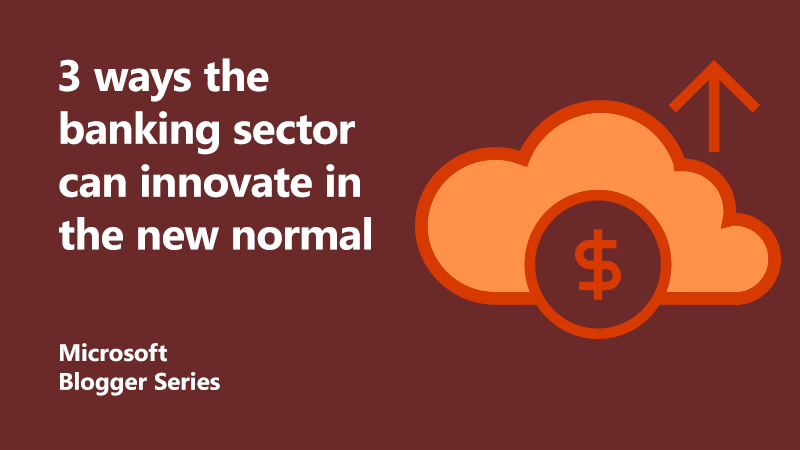
3 ways the banking sector can innovate in the new normal
This year alone, we’ve witnessed an accelerated pace of technology adoption. The increase in digital technology has caused customers to seek experiences that are available at any time, at any place and in every way. How has this changing the banking market? Discover how, in a new report, Boosting the innovation of banking business models. We deep dive into how customer expectations have changed, and what retail banks can do to retain, delight, and gain new customers.
[msce_cta layout=”image_right” align=”right” linktype=”blue” imageurl=”https://www.microsoft.com/en-us/industry/blog/wp-content/uploads/sites/22/2020/09/Pillar-5-banking.png” linkurl=”https://info.microsoft.com/UK-DTFIN-CNTNT-FY21-10Oct-14-Boostingtheinnovationofbankingbusinessmodels-AID-3024293-SRGCM3895_01Registration-ForminBody.html” linkscreenreadertext=”Download the report” linktext=”Download the report” imageid=”46091″ ][/msce_cta]
The digital customer experience has never been more important. Consumers are more mindful about world problems such as global warming and others. All of this translates into expecting their banking provider to act as responsible corporate citizens while offering advanced digital experiences.
How technology can help drive innovation
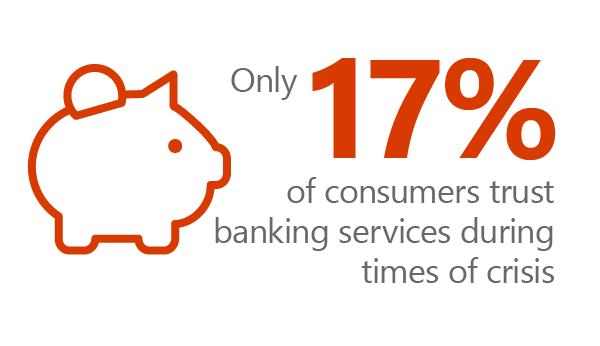 Before we take a look at the types of technology some financial organisations are using, remember that implementing technology isn’t ‘just because’. The real impact comes when you use technology to emphasise the following three areas:
Before we take a look at the types of technology some financial organisations are using, remember that implementing technology isn’t ‘just because’. The real impact comes when you use technology to emphasise the following three areas:
- Customer insights: Produce correlations from dispensed internal data such as CRM, transactions, and investment stats.
- Intelligence: Merge customer insights with external data related to economic trends and behaviour.
- Customer engagement: Leverage data from customer insights and intelligence to deliver personalised customer experiences at the right time, through the right channel.
Here’s a teaser from our financial services whitepaper with three out of five ways organisations can use technology to drive innovation, build resilience, and be truly customer-focussed. Download the whitepaper to access the full guide.
[msce_cta layout=”image_center” align=”center” linktype=”blue” imageurl=”https://www.microsoft.com/en-us/industry/blog/wp-content/uploads/sites/22/2020/09/Lifestyle-image-of-adult-male-in-office-touching-screen-on-Surface-Book-3.-2.png” linkurl=”https://info.microsoft.com/UK-DTFIN-CNTNT-FY21-10Oct-14-Boostingtheinnovationofbankingbusinessmodels-AID-3024293-SRGCM3895_01Registration-ForminBody.html” linkscreenreadertext=”Download the report: Boosting the innovation of banking business models” linktext=”Boosting the innovation of banking business models” ][/msce_cta]
1. Public cloud infrastructure
If you’re looking to innovate into a digital-first model, you need strong cloud foundations. Public clouds can be deployed faster than on-premise infrastructures and there’s no extra cost of purchasing, managing, and maintaining on-premise infrastructures. Every employee can use the same application from any device, securely over the internet.

For finance organisations, compliance and security is very important. Microsoft Azure is built with a multi-layered security approach, with physical data centres, infrastructure and operations. There are 3,500 cyber security experts actively monitoring to protect your business assets and data. With over 90 compliance offerings, you can ensure valuable data is correctly safeguarded, and AI-driven security signals can also help modernise your security operations.
2. AI
Another way for organisations to empower employees is by using AI. AI-powered chatbots are ideal as a first point of contact, and can answer frequently asked questions. If customers need more help, they can move them onto customer service representatives.
AI can also be leveraged for knowledge mining and machine learning. This uncovers insights and analytics that can enable more informed business decisions. AI can test millions of ideas/scenarios per minute, uncovering insights and information such as credit risk scoring, identifying vulnerable customers, and interest rate changes. You can also test new business models rapidly. In the new normal, the ability to enrich existing data with external data will help build resilience within the organisation.
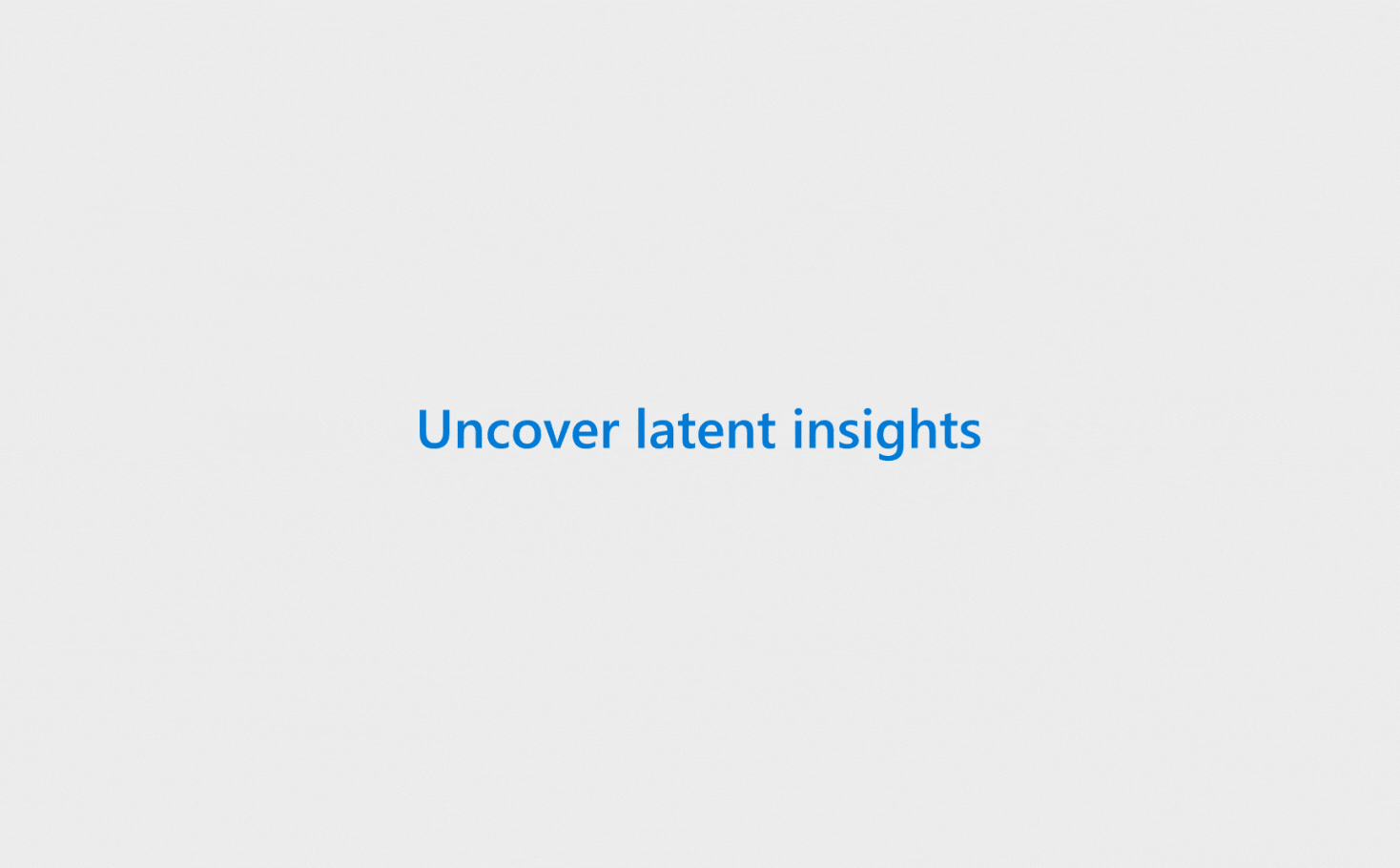
3. User experience
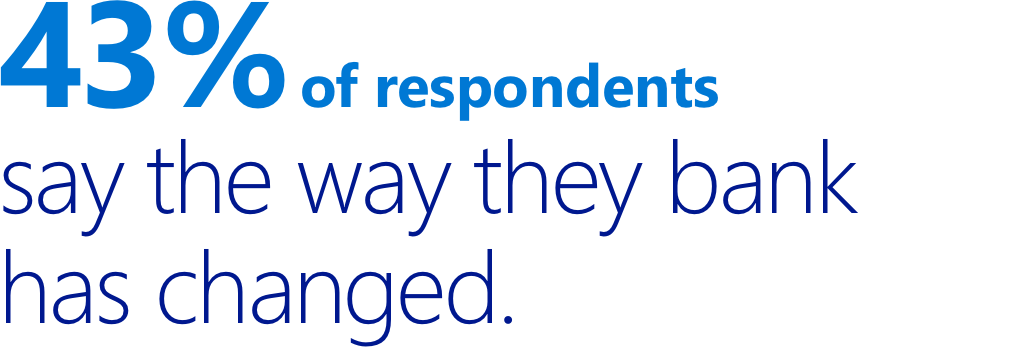 In the EY survey, 43 percent of respondents say the way they bank has changed. As customers are more used to digital ways of interacting, they expect financial institutions to adapt and innovate alongside them. Moving to mobile and web banking apps and leveraging new ways of delivering augmented experiences such as video conferencing, virtual reality, and augmented reality are key new business model enablers.
In the EY survey, 43 percent of respondents say the way they bank has changed. As customers are more used to digital ways of interacting, they expect financial institutions to adapt and innovate alongside them. Moving to mobile and web banking apps and leveraging new ways of delivering augmented experiences such as video conferencing, virtual reality, and augmented reality are key new business model enablers.
Citi traders, for example, is using the Microsoft HoloLens to see a virtual workstation that shows data as 3D images, making it easier to work and collaborate.
The new normal
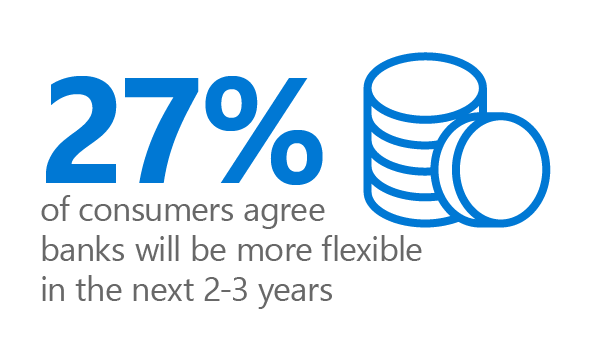 In the new normal, competition will occur between business models rather than product and/or process innovations. Financial leaders should adjust their digital strategy to focus on supporting their customers with innovative ideas and empowering employees with new skills. When you think about how you’re planning on achieving your business goals in the new normal, make sure you build a skilling roadmap alongside. This will ensure there’s no skills gaps in your organisation.
In the new normal, competition will occur between business models rather than product and/or process innovations. Financial leaders should adjust their digital strategy to focus on supporting their customers with innovative ideas and empowering employees with new skills. When you think about how you’re planning on achieving your business goals in the new normal, make sure you build a skilling roadmap alongside. This will ensure there’s no skills gaps in your organisation.
Find out more
Download the report: Boosting the innovation of banking business models
Watch the on-demand webinar: How are traditional banks adapting their approach in a digital world?

About the authors
Tine Petric is a Specialist in the area of Applications and Infrastructure, advising organisations within the Financial Services Industry. He is passionate about the impact that technology can make in inclusive finance and ESG overall. Tine is also an avid tech blogger and guest lecturer at universities where he talks about Business Model Innovation and latest tech trends. Tine holds a Master Degree in Business Administration and Management from the HEC University of Lausanne, Switzerland
Christian Thier leads the Financial Services Account Team Organisation of Microsoft in Switzerland. He drives strategic and transformational partnerships with Banks and Financial Services firms across all segments, helping its clients to accelerate in digital business transformation. He has more than 20 years of working experience within the Banking, Insurance, Financial Services and IT industry in various roles. Before joining Microsoft, he was working at Interactive Data, serving as Managing Director and Board Member of Interactive Data in Switzerland, and Vice President Sales EMEA since 2005. Christian holds a Master Degree in Business Administration from the Goethe-University in Frankfurt/Main, Germany.





